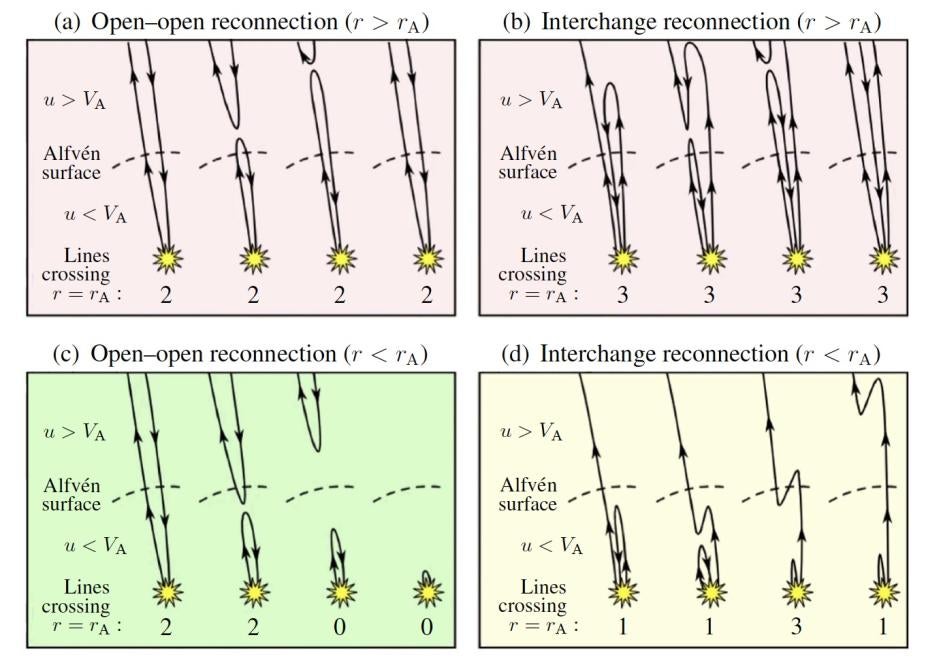
Illustration of the time dependence of field lines crossing the Alfvén surface for various kinds of magnetic reconnection.
Solar Physics: Sarah Gibson et al. state that the solar wind is the extension of the Sun’s hot and ionized corona, and it exists in a state of continuous expansion into interplanetary space. The radial distance at which the wind’s outflow speed exceeds the phase speed of Alfvénic and fast-mode magnetohydrodynamic (MHD) waves is called the Alfv´en radius. In one-dimensional models, this is a singular point beyond which most fluctuations in the plasma and magnetic field cannot propagate back down to the Sun. In the multi-dimensional solar wind, this point can occur at different distances along an irregularly shaped “Alfvén surface.” In this paper, we review the properties of this surface and discuss its importance in models of solar wind acceleration, angular momentum transport, MHD waves and turbulence, and the geometry of closed coronal loops. We also review the results of simulations and data analysis techniques that aim to determine the location of the Alfvén surface. Combined with recent perihelia of Parker Solar Probe, these studies seem to indicate that the Alfvén surface spends most of its time at heliocentric distances between about 10 and 20 solar radii. It is becoming increasingly apparent that this region of the heliosphere is sufficiently turbulent that there often exist multiple (stochastic and time-dependent) crossings of the Alfvén surface along any radial ray. Thus, in many contexts, it is more useful to make use of the concept of a frothy “Alfvén zone” rather than one closed surface. This paper also reviews how the Polarimeter to UNify the Corona and Heliosphere (PUNCH) will measure the properties of the Alfvén surface and provide key constraints on theories of solar wind acceleration.